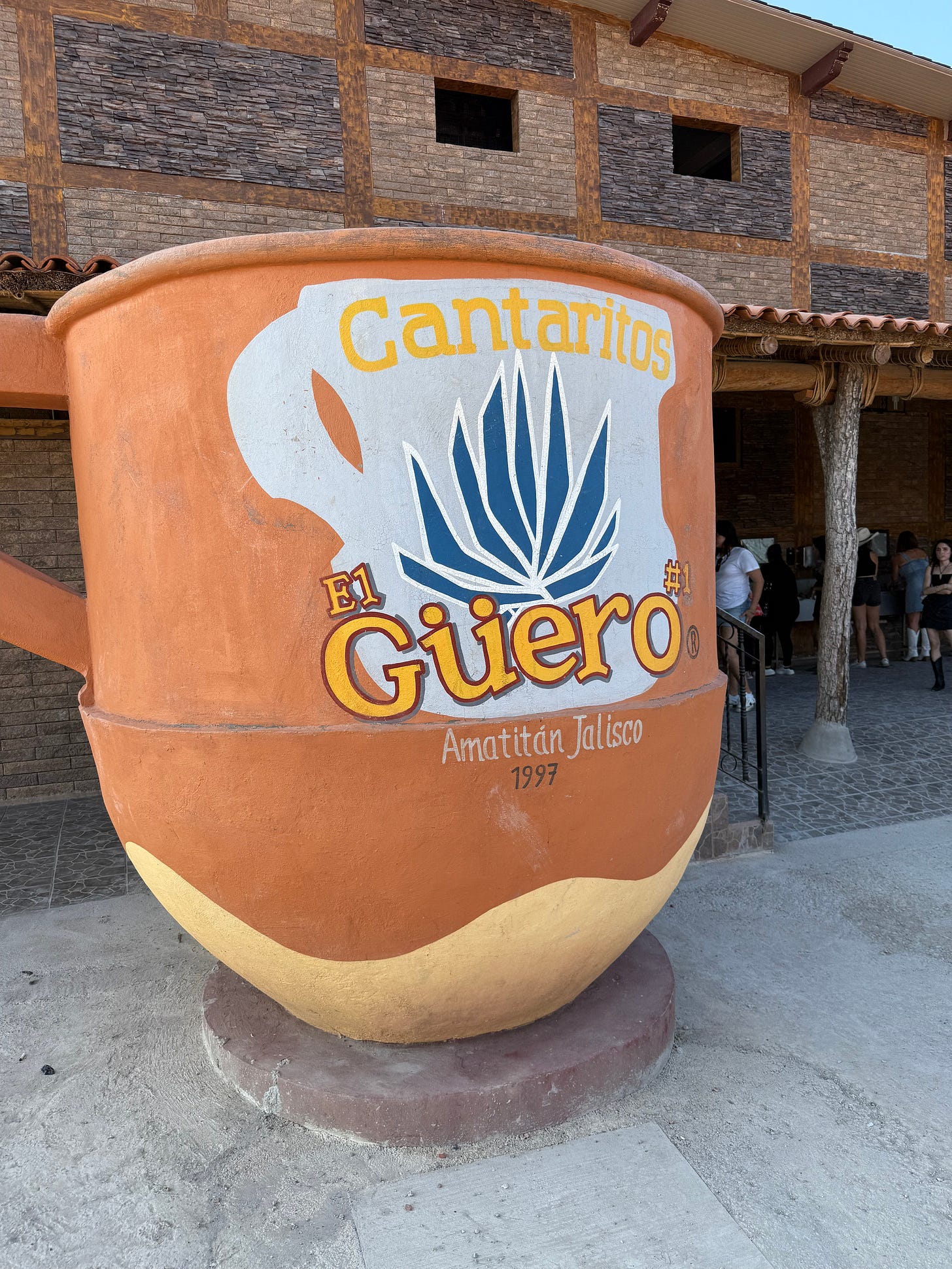Tequila
About an hour outside of Guadalajara lies the pueblo of Tequila. You guessed it — it’s the home of the alcoholic beverage of the same name. I’m not a big tequila guy — most of the time I’d prefer a Diet Coke. But I like to drink alcohol occasionally, and I have some fondness for tequila because the first hard drink that I was ever able to tolerate was a Tequila Sunrise.

I booked a tour that had good reviews, and the reviews were right this time. It was well put-together and moved quickly to just about everything that I wanted to see. Our first stop was Tequila Selecto de Amatitán, a very large distillery that focuses on producing private label tequilas. They use modern distilling technology like autoclaves and mampostería ovens (brick ovens), and have rows of large stainless steel fermentation tanks. The most impressive room was the aging room, where thousands of wooden barrels filled with tequila are left to mature for months to years, depending on the specifications for each brand. Aged tequila is flavored slightly by the barrels that are used. Our guide thought that aged tequila isn’t necessarily better or worse than others, but creates variations that some people love.
We learned that in the old days, agave was crushed and turned into a pulp by a large stone that was pulled in a circle by donkeys, then the juice would be fermented in large barrels. Without correct distillation techniques, early versions of tequila could lead to blindness, or even death. Taste testers literally risked their lives to ensure that the product was safe.
The Drinking.
There were about 12 people in our tour van, and they were all very friendly. Some of them came for the full experience, but there were a few who were obviously attracted by the line in the tour description that mentioned “unlimited tasting.” We started with 12 in our tour van, and ended up with 10 due to the “unlimited tasting” that two people took over the top. The tasting was actually interesting — we were taught the differences between plata (or blanco, or silver), which is shipped right after it is distilled, reposado (aged less than one year), or añejo (aged for one year or more). The key thing that we learned was that you want to make sure that your bottle is marked “100% agave.” If it is not pure agave, that means that the manufacturer has added something, typically water or a sweet syrup.
The tour continued by taking us to an agave field, where I quickly learned that the plants are really sharp, and I have the scratches to prove it. Then we headed to the pueblo (town) of Tequila, which is essentially a pretty town square full of tourists. It is also the home of José Cuervo, the famous tequila brand that holds the distinction of having the oldest tequila distillery that is still working. They began production in 1738.
There are several traditional Mexican restaurants in town, along with a number of vendors in booths or tents selling everything from food to trinkets and jewelry. I was surprised to also see a traditional dance called La Danza de los Voladores, or Dance of the Flyers. I have seen this on TV, but never before in person. It is a traditional Mexican ritual dance where men climb a pole and hang from ropes while spinning in the air. One of the flyers plays melodies on a flute the whole time he is descending. The dance comes from the Aztecs, and symbolizes fertility of rain falling from the sky, communication with the gods, and cultural identity. It is amazing (and scary) to see these men throw themselves into the air hanging by a rope.
More drinking.
The last stop on our tour was the famous Cantaritos El Güero.
It is a huge outdoor space filled with loud music, tipsy people, and lots of tequila. They are famous for their mixed drink called a cantarito, which is made with tequila, orange, lime, salt, and grapefruit soda. It is a delicious drink, and you can barely taste the tequila, but that’s what makes it so dangerous. The drink comes in many sizes from small (just two shots of tequila) to a huge 3 liter clay pot to share which includes two full bottles. There were hundreds of people there, dancing, singing, and having a great time. I ordered a small cantarito, which was just about perfect for me. There were several other members of our party who ordered way too much, and I’m certain that they were hurting the next day.
All in all it was a great tour, and it was really a good value - about $40. If you get to Guadalajara, I’d recommend it.




